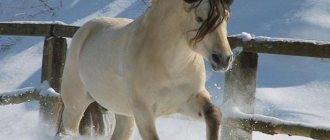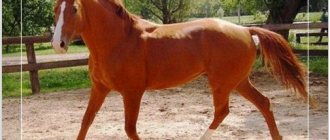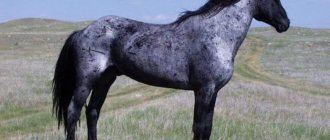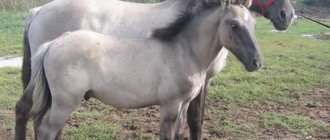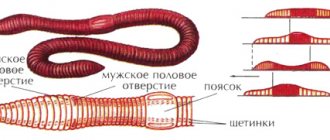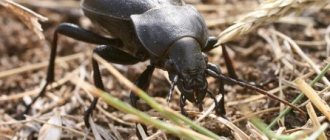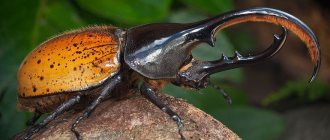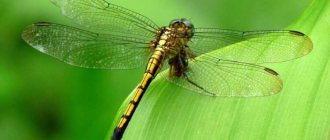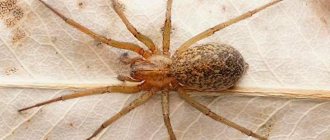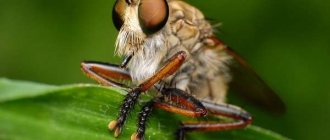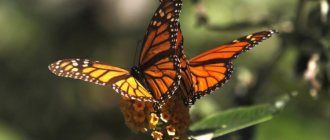There are also white spots on the legs, tail and mane of the animal, or the animal may be completely white. Spotted horses have a pronounced phenomenon called albinism, due to which the iris of the eyes is often blue. Eyes may also be blue.
According to experts, horse spotting is not a pattern , but a pigmentation disorder. But this problem did not stop horse breeders from breeding white horse breeds. Otherwise, today we would not be able to meet piebald handsome men and beauties in any corner of our world.
At all times, humanity has tried to establish the natural dependence of a horse’s temperament (performance) on color.
According to this opinion, dark bay horses are the most reliable and hardworking .
And gray and white individuals, and especially albinos, have a more pliable and gentle character. Red horses are characterized by weak endurance, and the behavior of black horses has angry and hot traits. An Arab proverb says that a horse breeder should never buy a red horse , if necessary, sell a black one, ride a bay horse himself and take care of a white one. In addition, there is a prejudice about horses of faded colors, which suggests that a red or bay horse has poor performance.
From time immemorial, white horses were highly valued by North American tribes , namely the Indians. They believed that horses of a light white color invariably brought their rider good luck and helped to avoid troubles on the path of life, being a kind of talismans.
We also recommend reading:
Zebra: white with black stripes, or black with white stripes? Horse anatomy: skeletal structure, number of bones, skull Horse running: performance features and types of gaits What horses prefer and like to eat
Redhead (Chestnut)
Horses of the red color are characterized by the same color in different variations. Red-haired individuals can be light apricot, yellow, or light brown in color. The mane and tail have a more saturated color compared to the body. For example, a light golden horse may have a brown tail and mane.
There are several variations of the red color. Let's look at them in more detail:
- Light red (light chestnut, sorrel or blonde chestnut). The color of the body, limbs and head is light. The mane and tail may be lighter or darker.
- Dark red (often meaning liver chestnut). The body color ranges from chocolate to dark chestnut with a reddish tint. The mane and tail may be darker or lighter.
- Red chestnut, cherry chestnut). Wool with a copper tint.
- Golden red (gold). Golden tint on the fur, playing in bright light.
Light red color
Red suit
Dark red horse
Red horse
Golden-red horse
In Vasmer Max's dictionary
piebald other Russian peg, old glory. pѣgotiv λεπρός (Supr.), pѣgota λέπρα (ibid.), Bulgarian. pega “freckle” (Mladenov 416), Serbo-Croatian. pjȅga – the same, pjȅgav, pjȅgast “spotted, freckled”, Slovenian. pẹ́ga “spot, freckle”, pẹ́gаv “spotted”, Czech. píha “freckle”, slvts. reha, Polish piega - the same, v.-luzh. riha, n.-luzh. pěga "freckle". Related to other Indian piŋktē (gram.) “draws”, piŋgas, piŋgalás “reddish, brown”, piñjaras “reddish, golden yellow”, lat. pingo, pinxi, pictum, -ere “to draw; embroider, embroider”, Greek. πίγγαλος “lizard”, πίγγαν ̇ γλαυκόν (Hesychios). Further goes back to *poig-, related to I.-e. *peik̂- (see write); Wed Fic I, 472; Thorpe 241; Uhlenbeck, Aind. Wb. 165; Ilyinsky, RFV 74, 130; Walde–Hofm. 2, 305. The connection with other historical sources is doubtful. féikn “disgusting, harmful”, d.-v.-n. feihan, English fiс “deception”, contrary to Zupitz (GG 161; cf. Walde-Hofm. 2, 300 et seq.)
Gray
Often considered the main suit, although this is not entirely true. This color is also called gray. It occurs as a result of mixing black and white hairs. A distinctive feature of the gray color is the change in shade throughout life.
Over time, any horse can change color - turn gray, due to an increase in white hairs. It happens that a foal is born black, and then its color changes - it becomes lighter and lighter. As a result, upon becoming an adult, the foal acquires a light gray color, and then may even become white.
For gray horses, there are 4 patterns:
- Light gray. This is the color of a horse that has turned gray over time. Moreover, she has almost white hair.
- Dark gray (dark gray or iron grey). The entire body, with the exception of the head, is dark gray in color. The head, as a rule, has a light gray color. This suit has a second name - steel, and it is often confused with mouse.
- Dapple grey. The body is covered with round spots that are lighter than the main background. These spots repeat the network of blood vessels.
- Flea-bitten grey, if the buckwheat is dark brown/black, or trout (rose grey), if the buckwheat is red-cherry in color. The horse's body is strewn with tiny specks, like cereal. Some people say that the horse has “freckles”, implying this cue. With age, the first version of the “buckwheat” progresses, and the trout bait appears precisely after the first molt.
Light gray horse
Gray suit
Dark gray horse
Gray in the "apples"
Gray with buckwheat
Gold
This is the rarest and very beautiful color of cats with the coding ny 25. The background of the animals’ fur in this case is apricot, and the stripes on the hair are dark. The most common golden ticked color is found in British cats. According to the standard, the eyes of such pets should be emerald green. The paw pads, as well as the outline of animals in this group, are brown or black. The nose of cats of this color is brick-red.
Pinto horse nutrition
The pinto horse feeds on hay and pasture. The amount of food consumed depends on the age, weight and health of the animal. When purchasing hay, make sure it is free of mold and dust.
There are many different options on sale: alfalfa, grass hay, oats, palmetto. It is recommended to feed young animals with concentrates. The most popular are oats, barley, beets, grain with molasses.
The favorite treats for painted horses are fruits and vegetables. To reward your pet, treat him to an apple or carrot. If a horse licks dirt, it means that there is not enough salt and minerals in its body.
The task of a good owner is to provide it with vitamins, micro- and macroelements. According to the rules of keeping, a horse must be fed several times a day.
It is also necessary to provide it with clean and fresh water. Water consumption per day is 35-48 liters. There are a number of foods and plants that should not be given to horses. Poisonous are spurge, lily of the valley, toadflax, yew, elderberries, and oleander.
Horse chestnut, laurel, azalea, and phytococcus give them diarrhea. Also, chaff and tall fescue should be excluded from the horse’s diet and sweet clover, bran and meadow clover should be given in limited quantities. The pinto is susceptible to any changes in diet. Therefore, give preference to already proven food.
Colors of piebald horses
The color variations of piebald horses include all shades of existing horse colors. Light spots are characterized by smooth and “ragged” edges. They may be present in small numbers or cover most of the body, including the tail and mane.
The Russian classification identifies the following colors of piebald horses:
- Raven-piebald. A beautiful pattern is based on the contrast of white spots with the main dark color. There are few white markings.
- Bay piebald. The main bay color is diluted with pezhins. A light shade is present on the mane, tail and limbs. Sometimes the mane is thinned out with red or black areas.
- Red and piebald. On the main red coloration there are white spots, distinguished by an indistinct shape. The mane and legs are often light colored.
- Grey-piebald. The mane is usually decorated in gray and white tones. The limbs are characterized by a light shade. The number and size of pezhins may vary. Sometimes there are individuals whose body is painted white with small areas of gray color.
The gray-piebald variation is considered a rare species. The most common are the first three varieties of spotted horses.
Description
First of all, you can recognize a pinto horse by its non-standard spotted coat color. The skin of such horses has partially white spots, which makes them resemble the color of cows. It looks unusual and attractive.
That is why piebald horses have special fame and recognition, unlike other horses, whose color is often difficult for the ignorant layman to recognize.
There are 4 types of colors of piebald horses and, as a result, 4 different colors.
- Bay-piebald. This color has many white spots on its skin; even often you can see white spots on the mane and tail - large or small. However, this animal may also have red and black spots on its body (most often on the tail and mane).
- Raven-piebald. A very beautiful color, which is characterized by the presence of large contrasting black spots. There are a small number of white spots, but they are also present, and you can notice them on the horse’s body. This combination truly makes this suit extraordinarily beautiful.
- Red-piebald. For the most part, animals of this color have many red spots in their color; it is not for nothing that the name itself sounds like red-piebald. However, there are also white spots, but they are quite rare and indistinct.
- Grey-piebald. This is perhaps the rarest color of piebald horses and is quite rare in nature. These animals are distinguished by greyish-white skin. Their limbs are usually very light. Among this color there can also be completely snow-white horses with small light spots.
Note: Scientists have proven that piebald horses are partly albino due to their genes, which is why piebald horses most often have blue irises. Although sometimes there is a phenomenon called heterochromia, in which the eyes have a different iris color from each other.
Pinto horses are quite calm and are famous for their submissive disposition.
Riding these horses does not require much difficulty or special skills, since they are extremely docile and gentle.
Even non-professionals can ride such horses.
Selective breeding
Despite all the efforts that breeders strive to put into their own difficult task, in the process of breeding piebald horses. You can never guarantee with complete certainty that a foal will emerge as the owner of a certain type of piebald. However, this is not an overly terrible problem. A striking example of this can be the process of crossing two Overos. When such breeding takes place, it may seem to an observer who knows very little about the essence of the matter that this undertaking represents an excellent chance for a foal with a colorful appearance to be born. More often than not, this is true. But, if both of these Overos carry a special gene that is responsible for the “frame overo” look, there is a possibility that the white foal will be born dead.
Based on a special study, it can be argued that with both parents having such a look as “Splashed White”, the case described above, with rare exceptions, cannot occur. The same can be said about Sabino.
Origin
Scientists believe that piebaldity in horses is caused by partial hairline albinism. Such a disorder in the genes is passed from parents to young animals, in which the hair pigmentation is also disturbed in certain areas of the fur, as a result of which white spots appear.
But despite the fact that the cause of piebald horses has already been identified, researchers are still trying to figure out where piebald horses actually come from. The oldest evidence of the use of such animals dates back to the times of Ancient Egypt. Also, certain sources claim that the suit was popular in China and Mongolia. Moreover, it is the Mongolian steppes that many scientists consider the birthplace of piebald horses. As blood mixed with other breeds, they gradually spread to other territories.
As already noted, the attitude towards piebaldism was formed differently in different regions. The Mongols highly valued this color, considering its bearers sacred. In Europe, spotted horses were treated with disdain. Reputable breeders thought that piebaldity was a sign of working or “gypsy” animals. Therefore, they were not allowed for selective breeding. Piebald horses were used in the Middle Ages exclusively for heavy draft work.
Spotted horses came to America with the Spaniards. The exotic colors of the horses made a strong impression on the Native Americans. They saw a mystical origin in the animal's snow-white spots, and little by little this color became increasingly popular. Gradually, breeders appeared seeking to develop new color options and make it even more unique. And in the 20th century, such amateurs even formed their own association.
What determines the color of a cat?
All cat breeds that exist today are descended from several species of wild cats that lived in the hot African savannas or the snowy forests of Europe. Initially, color served a very practical role - it made the animal “invisible” among thickets of bushes or tree branches, so wild cats were predominantly spotted or striped gray, brownish, sandy in color. After domestication through selection, new shades began to appear in the color of cats.
Bay color
The bay color of the horse implies a brown body color. The same is true of wild horses. Accordingly, bay horses are close to them genetically. This is what is associated with the unpretentiousness and endurance of brown horses. They are the fastest, because in nature you often have to run away from predators and pursuers.
Natural selection gave the bays excellent health. Confirmation of this is the record holder among horses for life expectancy. His name is Billy. The gelding from Cleveland lived 62 years, with the average horse age being a quarter of a century.
They did not stand on ceremony with the gelding Billy. Until the end of his days and from a young age, the horse towed barges along the shore. This confirms the endurance of bays. It’s not for nothing that there is another record among them. We are talking about the most expensive stallion. His name is Frenkel. The horse costs 200 million dollars. The average cost of a horse is 5 thousand conventional units.
One of the most common horse colors is bay.
The bay color has 8 strokes. It's easy to imagine dark and light brown, bay, golden, chestnut and cherry. Two more names require decoding.
Bay-chestnut horse color
Underhair is characterized by bleached areas in the groin, elbows and eyes of the animal. It’s easy to remember if you know the term “tanned,” that is, darkening. Podlas is the opposite.
Underhair horse
The last bay option is the horse's karak color. The term is taken from Turkic. There “kara-kul” means “black-brown.” This is the essence of the name. The color of horses is characterized by a dark brown body and black legs, tail, and mane.
Karak horse
Wild horses are black with brown undersides. Domestic bays also have lighter limbs. They are white on a brown background. In adulthood, this coloration is rarely preserved. With age, the legs darken.
Young bay foals, on the contrary, have lighter limbs
Bay-piebald horse
Rare colors
You can find very unusual colors in both domestic and wild animals and birds. For example:
- Nicobar pigeon. The long mane feathers have a rainbow tint.
- White and blue peacock (got its outfit due to gene mutations).
- In domestic animals - horses, cows, cats, dogs - it is not difficult to detect absolutely all variants of piebaldity.
- The peacock spider is considered the most beautiful spider in the world. Its abdomen may have markings of different shades - blue, orange, red, purple, light blue, yellow.
- Mandarin duck. She has feathers of orange, red, green, olive-brown, brown, purple, yellow, blue, and black.
- Blue lobster - occurs one in two million individuals.
- The Indian bullfrog is bright yellow with blue cheeks.
- Representatives of parrots and aquarium fish can boast the most rich and amazing combinations of colors.
Almost all species have albinos. The absence of adult individuals in the wild indicates that animals of this color are unadapted to living conditions.
Health problems
For several decades now, experts have been studying the characteristics of the genes of piebald horses. Many theories have not been confirmed, so it is impossible to say with certainty what color the next foal will be born. Sometimes parents of colored colors give birth to a monochrome cub. If he also has spots on his body, this does not mean that he will be a copy of one of his parents. True, this fact is of little concern to breeders, who try to ensure that white foals prone to quick death after their birth do not appear among the Overo individuals. Piebald horse lovers treat their pets responsibly and carefully select pairs for breeding.
The piebald breed has a complex inheritance system, which has different levels of expression and influence of genes.
The weak link is the frame-overo color, since when crossing its representatives, there is a 26% chance that the cub will be born with gastrointestinal problems. Usually the problems are associated with an underdeveloped colon. This result is caused by the Fr gene, which provokes the formation of a lethal outcome. To discover a gene hidden in horses, they undergo DNA testing.
Among the popular genetic diseases of the piebald breed, epitheliogenesis and periodic paralysis should be noted.
Piebald horses are distinguished by their peculiar originality. Their colors are reminiscent of abstract paintings by artists. With asymmetrical patterns, the bodies of spotted horses look picturesque and unique. It was not for nothing that the ancient Indian tribes considered these animals special. In modern films about this people you can often see pinto horses used, so spotted animals are often associated with Indians
Horses of different colors with white markings always attract the attention of spectators not only in circuses, but also in competition stadiums
EPISODE TWO, in which Piebald almost broke up with Vitya
Summer was in its last days. There was a catastrophic lack of money. Irina was thinking about selling Piebald. He seemed to feel that he tried hard in training and didn’t even give up in front of obstacles. He walked sadly and quietly.
Vitya spent the day and night in the stable. During this time he became close to Piebald. I talked to him, stroked him, and the horse turned his head and listened. It was hard to say goodbye.
“You have to be careful with people like that,” Aunt Manya whispered conspiratorially, glancing sideways in Vita’s direction.
- He’s looking at the piebald horse. “She’s trying to sneak past him,” Irina told her husband.
The buyer has arrived. Important, serious, he quickly jumped off the running board of the truck. Vitya looked at him and decided - “Mister”, and a “teapot” at that, in a suit, his shoes were polished. Yes, even with a cell phone. They decided not to take the gentleman to the stables. Before his arrival, Piebald was brushed, combed and tied outside. The gentleman from the side approached the horse, looked, clicked his tongue.
Vitya (gloomily): “Careful, he’ll kick.” The gentleman pulled back
The gentleman pulled back.
Irina (smiling): “No, no matter what, he’s calm. Hardy, ideal for children, affectionate...”
Mister: “Jumped?”
Irina: “Up to one and a half meters!”
Vitya: “His legs are weak, but he throws himself on routes. Lazy".
Irina (to Vitya): “Viktor Afanasyevich, call the company in the meantime, find out about the contract... (Smiling affectionately at the gentleman) Business. Business, you see.”
Vitya, grinning, trudged away. For the first time they called him by name and patronymic - Viktor Afanasyevich.
The conversation lasted about half an hour. During this period, Irina described the horse’s racing, hunting and other talents, and Piebald, no fool, managed to wipe his muzzle on the gentleman’s jacket and leave a hoof mark on the buyer’s patent leather boot.
- Rental horse. As far as I can see, nothing special,” muttered the victim.
So the gentleman left, but Piebald remained...
Dream Interpretation - Horses
Strong friendships and success in business. Being in the saddle means you are in control of a difficult situation. A beautiful horse means success in love and creativity. Riding a horse means you will be a winner in all circumstances. A herd of horses - your future will bring you only cloudless days and impressions. A horseman is chasing you - receiving the long-awaited news
White horse - a dream foreshadows a happy ending to an important event for you. Black horse - promises a quick marriage
Pinto - listen to your intuition. A horse in apples means the strength of friendships and the joy of meeting like-minded people. Meet a rider on a horse - you will find a protector and patron. A dressed up horse means that you will soon receive a new position. Dead horse - a big win awaits you. A hobbled horse - you will be able to expose a slanderer in your environment. A horse is grazing in a meadow with lush grass - soon you will be offered to participate in a business that will bring profit. Feeding a horse from your hands means someone close to you will soon need your help. Flying on a winged horse means glory. Untamed - to victory over enemies. Listen to a horse neigh - listen to the advice of an authoritative person. The horse threw its rider - foreshadows the onset of a happy time and the fulfillment of all our desires. Buy - to receive the long-awaited news. Selling means getting rid of burdensome debt. Crossing a stream on horseback means your brilliant plans for the future will become a reality. If you tame a horse, your business affairs will improve. Imagine that you are prancing on a beautiful, healthy horse; the rest of the horses are ridden by your friends.
History of appearance
From ancient times to this day, scientists have differed in their opinions about the true origin of piebald horses. No one has ever gotten to the bottom of the exact data: where these horses came from, since when they have lived on Earth, and so on. However, with the help of archaeological excavations, scientists were able to find out that these colors were also found in the vast steppes of Mongolia and China. Scientists have also found that piebald horses have some gene anomaly, which is why they acquired an unusual and exotic color.
Several centuries ago, such horses in Europe were treated with disdain. The heaviest horse work fell on them, which could lead to quick death, since piebald horses were not intended for hard work due to their heredity.
In America, on the contrary, these horses were loved and even elevated to a symbol of the Wild West. The ancient Indians were convinced that such horses promised good luck and prosperity.
Pinto horses were brought to North America by the conquistadors. There the horses became wild and were not intended for breeding. They attracted local residents with their coloring, but no one tried to tame them.
Genetic conditioning
The appearance of the fur of tetrapods is determined by different genes. Some of them are responsible for the fusion of the substances eumelanin and pheomelanin. Other genes distribute these elements throughout the pet's coat and body.
There is a hereditary predisposition that determines the intensity of the basic tone and spottiness of the fur. The main genes responsible for the tone of the coat are genes A, C, B, D, E, G, M.
Their combination forms the color and pattern on the body of the four-legged friend. Genes are able to combine in different combinations, distributing pigment and spotting throughout the body. Experienced breeders, having seen the parents of the future puppy, are able to calculate the baby’s exterior, even if he is still in the womb.
The standards of some breeds contain strict rules on genetic conditioning. For example, in Europe there is a ban on dogs with Isabella color. This variant contains a combination of genes that subsequently provoke a whole range of diseases.
Historical reference
Studying the origin of the piebald color, scientists concluded that it has existed since ancient times. Evidence of the existence of piebald horses is found in historical documents of ancient Egypt. In China and Mongolia, piebald horses occupied leading positions in horse breeding. But in Europe, on the contrary, there is a disdainful attitude towards piebald horses. In the Middle Ages, the piebald horse was called the “gypsy horse.” The color of such a horse was called “cow” and it was used specifically for hard physical work - draft labor. Due to this feature, no one in Europe was engaged in breeding piebald horses.
But in America, a completely opposite attitude towards pinto horses has formed, where they were brought by the conquistadors. Over time, piebald colors also appeared among the feral horses. There was a belief among the Indians that a spotted horse helped a rider in battle and protected him from failure. The piebald horse is a symbol of the Wild West. The number of fans of piebald horses has increased greatly over the years.
Amateur horse breeders, against the backdrop of widespread affection and the emerging idol of the pinto horse on the American continent, sought to create as many color options as possible. Piebald horses there began to be called pinto (sometimes paint). A little later, a breed was created - the American Paint Horse, based on the basis of American Quarter Horses and riding horses. Since ancient times, the piebald horse has been the most popular and easily recognizable on the American continent.
Historians are still concerned about the question: where did the piebald color of the horse come from? Experts are inclined to believe that this is caused by a gene abnormality, which leads to disruption of hair pigmentation and is inherited. There is an opinion that the reason for the widespread distribution of spotted horses was inbreeding with Mongolian horses. Among factory breeds, piebald color is quite rare, while among outbred working horses of unknown origin, this phenomenon is more common than usual.
In the middle of the 20th century, namely in 62 of this century, lovers and owners of piebald horses united into a single American Association. A horse with any conformation and pedigree could join this association. The only and main condition is the possession of a piebald color. Horses were actively used on ranches, in equestrian tourism and in amateur show jumping demonstrations.
Basic markings on horses
A small white spot on a horse's forehead is a star, and a large spot is called a star. Between the nostrils there may also be a spot (white or pinkish), which is called whiteness.
The white narrow stripe along the muzzle is called a blaze. It can be combined with a star and/or white. The track may be interrupted.
A wide white stripe, sometimes covering part of the nostrils, is called a “bald spot,” and if it covers the entire facial part of the muzzle and lower jaw, then it is a “lantern.”
Markings on horses
Horse structure
Markings may also be on the limbs. When talking about white spots on the limbs, they indicate the part of the leg where this mark is located (see the picture with the structure of the horse). In the half-carpal part, the bela is called a “sock”, the bela up to the wrist joint is called a “sock”, and the bela with the grip of the wrist joint is called a “stocking”.
Red horses may have Magomed spots on their croup. And also, regardless of color, there may be light round spots (“apples”) on the sides of the horse, repeating the network of subcutaneous blood vessels of the horse. It is believed that the appearance of apples is a sign of health and sleekness of the horse.
Color genetics: participants in the process
Two pigments are involved in the formation of a cat’s color: black – eumelanin and red – pheomelanin. The hereditary instructions for color are transmitted by one of two structures from each parent, as well as by 19 chromosomes. Inside chromosome 1 there are more than 20 thousand genes that form the external characteristics of the animal: height, weight, length and coat color.
The sex of the offspring is determined by the X and Y chromosomes, which always come in pairs: XX creates a girl, and XY creates a boy.
IMPORTANT: the O gene (orange, responsible for the pigment) is attached only to the X chromosome, so red male cats can be found much more often.
The types of cat colors are traditionally black and red: it is they, thanks to different combinations, that form all other colors. Each color gene exists in a dominant and recessive form, for the red color the first is designated as “O”, and the second as “o”. For white these are W and w, and for black there are three varieties: B (black), b (brown) and bl (light brown).
IMPORTANT: the kitten will be black if two recessive oo genes are formed together.
External features of piebald horses
Suit refers not only to the color of her hair, but also the shade of her skin and eyes. It is one of the main differences between the animal.
The same can be said in the case when they have hair on the body of the same shade, but the hair on the mane and tail is colored differently. At the same time, the color scheme of the same suit can have great differences.
Piebaldity is classified as partial albinism. Experts believe that spotting in coat color is not typical for horses, so they consider it some kind of deviation from normal pigmentation. The main characteristic of piebald horses is the presence of large, irregularly shaped white spots on the legs, sides and back. Another name for spots is pezhins. The patterns are very diverse - from a few small spots to the maximum possible coverage of white.
They also have blue or multi-colored eyes (one is always blue), which does not affect the horse’s vision in any way. The mane is predominantly light; the tail has characteristic fragments of pigmentation (if there is no primary color in this part of the body). The predominant coat color on the legs is white.
Americans have their own classification of piebald types. They divide all piebald horses into two main types (which are divided into subspecies):
- Tobiano;
- Overo.
The classification is mainly focused on the placement of colored areas along the body of the animal.
Cause
The piebald color begins to form in the womb. Vertebrate cells called melanoblasts are responsible for the pattern. Before the process of differentiation (before a change in the function of the cell, its metabolic activity, size, shape) they do not contain pigment. They are the precursors of pigment cells that produce melanocytes in birds and mammals, and melanophores in cold-blooded animals.
Melanoblasts in vertebrates are formed in embryos in the neural crest. Subsequently, they move to the epidermis. Any disturbance during migration leads to non-standard coloration of the species. This can manifest as albinism and piebald hair color:
- Melanism. With increased pigment formation, an excess of melanin gives a rich black color.
- Chromism. The sequence of pigment formation is as follows: first, a red pigment is formed, and then it becomes black. A disruption in the transition chain leads to the appearance of “golden” individuals.
- Piebaldism. A body condition that affects melanin production is manifested by the segmented appearance of white patches on the animal's skin.
- Albinism. The complete or partial absence of pigment in the cell leads to the appearance of white individuals.
Characteristic features of the overo subspecies
This type of horse has on its body a pattern of asymmetrical light spots that seem to be scattered throughout the entire area.
The legs are predominantly dark in color, the color of the tail and mane is the same tone. There are practically no white spots along the animal's spine. This subspecies is determined by the dominant OV modifier gene, from which its name comes. This subspecies includes:
- Frame-overo;
- Sabino-overo;
- Overo splash white.
Characteristics of the frame-overo line
The word frame is translated as “frame”. That is, these horses owe their name to a specific pattern on the body - their white spots are located, as if surrounded by a frame of the main color. The head of most of these animals has a basic color. The tail and mane are painted in the same color scheme.
White spots are located in the neck area and quite rarely reach the back area, so that the white color practically does not cross the ridge area. As an exception, the case is when the white color dominates the main color. These animals have blue eyes. The legs are predominantly white (more than three-quarters of the entire area of the legs).
This subspecies is defined by the dominant modifier gene Fr, from which it takes its name. Previously, scientists mistakenly considered this gene to be recessive. They argued this by saying that piebald parents produce offspring that are not piebald. But later it was found out that the parents of such horses can have an inactive gene, while at the same time being its carriers.
This leads to the appearance of colic for some time (several days). After this, the newborn dies. American scientists have found a way out of this problem. So, having done a DNA test on the animal and found the Fr gene, they try to mate the horse exclusively with the stallion that does not have this gene.
Typical features of sabino-overo
The peculiarity of these horses are clean light spots with ragged edges, which are a little reminiscent of the spots on the sides of cows. Such spots are located mainly on the sides, stomach and legs. The legs are mostly white.
This type is the most common in the USA. These horses have a white head; the pattern can also include the lower lip of the animal. Sabiano can appear in different variations. The opinions of scientists regarding the modifier gene are divided: some believe that the N gene is to blame for everything, while others are confident that the Sb gene leads to this color.
In our time, none of the options has been confirmed or refuted. Many experts are confident that the body of Sabino horses has several non-allelic genes. The main colors are bay, brown and black. The eye is blue, but there are cases when the eyes are different in color (for example, one is blue and the other is brown).
Characteristic features of overo splash wide
This subspecies of horses has a pattern of white spots that extend from bottom to top and cover the animal's muzzle.
It looks like the horse ran through puddles of white paint and splashed itself. The color of the muzzle and tail is also white, the back is dark. This color occurs due to the manifestation of the Spl gene. According to experts, a whole group of non-alelic genes is involved in this case.
Varieties
In the United States, piebald horses are registered as pinto horses. Pintos, in turn, are divided into 2 types, which differ in color. These are the Tobiano and Overo suits.
Now briefly about each suit.
Tobiano
These horses are notable for their dark color on their sides. The limbs of such horses, as a rule, have a snow-white tint. The tail, in turn, has 2 colors at once - black and white - which overall looks very interesting.
Tobiano has symmetrical spots on both sides. These spots are quite distinct and most often oval in shape.
By the way, a remarkable fact: sometimes piebald foals can be born to horses that are not piebald at all.
Overo
Overo piebald horses are also divided into several types: frame overo, sabino overo and overo splashed white.
- Frame overo. It is not for nothing that the name of this suit contains the prefix “frame”, which means “frame” in English. In such horses, the white spot is usually located on the sides, without extending onto the back. The spot appears as if framed by a different, darker color. Sometimes there are overo frames with a predominance of white, however, most often there is a white spot only in the neck and sides.
- Sabino overo. The limbs of these horses are marked with a snow-white spot. Very often, the spot can be located throughout the leg, forming a kind of “stocking”. Also, a white spot can stretch from the beginning of the limbs to the lower abdomen. Less commonly, snow-white spots appear on the head. However, this also happens with Sabino Overo - it’s worth knowing.
- Overo splashed white. A characteristic feature of these horses is their white color from the limbs to the head. The rest of the skin has a darker shade. Overo splashed white can be immediately recognized by the way a large white spot rises from the bottom to the top, as if the horse got into white paint and was partially stained with it.
There is also another suit called tovero. Toveros combine the characteristics of the horses described above, and confusion often arises when registering these horses. Most often, horses of the tovero color have a so-called cap - a kind of bangs on the head.
Care and breeding of piebald horses
We looked at two main types of piebald color - tobiano and overo. In nature you can find a wide variety of shades of these two subspecies - about a dozen. Therefore, even experts cannot guarantee that a foal of a particular color will be born.
The offspring have white legs, spots are found on the stomach and sometimes on the sides. In most cases, the animal has a white spot on the head that extends to the lower lip.
We distinguish the following shades of piebald color (depending on the main coat color):
- Raven-piebald - white spots on the black color;
- Red-piebald – white spots on the red color;
- Pied - white spots according to the sexual color;
- Karakovo-piebald - white spots on the Karakovo color;
- Grey-piebald – white spots on gray color;
- Bay-piebald – white spots on the bay color;
- Bulan-piebald - white spots on the dun color;
- Brown-piebald - white spots on brown color;
- Savras-piebald - white spots according to the color of the savras;
- Roan-piebald - white spots on the roan color;
- Lime-piebald – white spots along the lilac color.
Piebald Horse Problems
Most of the health problems of piebald beauties are determined by genes. Thus, experts consider frame-over horses to be the weakest.
They suffer from severe colic, which is fatal.
It's all due to the Fr gene. This can be avoided if you ensure proper crossing of animals. Thus, experienced horse breeders claim that if one of the future parents has the Fr gene, and the other does not have this gene, then the offspring will be born healthy.
In general, it is not advisable to cross such pairs as frame-overo and frame-overo, frame-overo and tovero. In these cases, there is a very high risk that the offspring will be stillborn. In large foreign horse breeding farms, owners conduct special tests for the presence of the Fr gene.
How to care for animals?
Animals of this color are quite persistent, so even a novice horse breeder who does not have any special skills in raising and breeding horses can breed them. Their diet is practically no different from that of other breeds.
The only important requirement is to include a sufficient amount of vitamins in the animal’s diet. Thanks to a regular, abundant supply of nutrients, the horse's coat will have a healthy and shiny appearance.
Regular intake of food and water in sufficient quantities is the key to the strength and health of future offspring.
The main feature of piebald horses is their heat-loving nature.
Therefore, it is very important that there are no drafts in the room where the animal lives, since piebald horses are difficult to tolerate various diseases
It is important to take regular walks and jogs in the fresh air, which is beneficial not only for your pet’s health, but also for maintaining good physical shape. Physical activity is also beneficial for the development of the cardiovascular system of the horse
Main myths and misconceptions about piebald horses:
- Myth 1: Horses with blue eyes are only born in the Overo line. In fact, this eye color can be found in horses with any type of piebald. And although this does not affect vision in any way, such animals have increased sensitivity to light.
- Myth 2: Tobiano horses are decorated with a pattern on the body of colored spots scattered on a white background, while overo horses do the opposite. In nature, each variant has its own pattern of white spots. There are individuals with both almost completely white and almost completely dark coat color.
- Myth 3: Pinto horses have “shaded” spots. This effect is only possible if the animal has dark skin. Thus, the formation of a shadow is due to white wool growing against a dark background.
Thus, the pinto horse is an unusual, beautiful and low-maintenance animal - however, during the breeding process, individuals for crossing should be carefully selected in order to obtain healthy offspring.
Definition
The presence of large white, irregularly shaped spots on the animal, unevenly scattered over the body, is a piebald color. It is impossible to predict what design nature will come up with and when. Sometimes the spots reach such a size that they completely cover the body of the individual. The iris of the eyes can be either dark or blue.
A gene mutation can trigger at any time. Such “gifts” lead to the development of new colored breeds of animals. They are especially valued in fur farming and in breeding ornamental species of pets.
Care and price of pinto horse
Caring for piebald horses does not require any special skills. Their diet is similar to most other horses. Regular intake of food and water in the required quantity is the key to the health of the horse and its future offspring.
Don't forget about vitamins. It is thanks to regular intake of vitamin complexes that the animal’s coat will literally shine with health and beauty. Piebald horses are heat-loving animals.
In the photo there is a pinto bay horse
Therefore, it is necessary to create appropriate living conditions for painted horses. There should be no drafts in the room. Don't forget about daily walks. A few laps around the parade ground will be enough to maintain good physical condition and prevent cardiovascular diseases.
To monitor the condition of the animal, it is necessary to undergo examination by a veterinarian 2 times a year. Checking and useful advice from a specialist will help prevent the occurrence of various diseases.
Proper care of these beauties includes regular cleaning, bathing and shoeing. They should be bathed once a week. You need to use soap and a special brush.
In the photo there is a red pinto horse
After washing, be sure to rinse and pat dry with a clean cloth. Thanks to regular water treatments, your pet's coat and mane will be beautiful and shiny. But you shouldn’t overuse washing during the molting period.
Horseshoeing is another important aspect of grooming. You cannot do without it if your horse takes part in racing or is used for heavy physical work. You can shoe all four hooves, or only the front or rear. It all depends on which hooves will bear the most load.
The main thing is to understand that keeping and caring for horses requires significant financial costs, a lot of time and effort. But if difficulties do not frighten you and the decision to buy a piebald horse has already been made, then all that remains is to decide what breed it will be, since piebald is any color of horse with a specific color.
